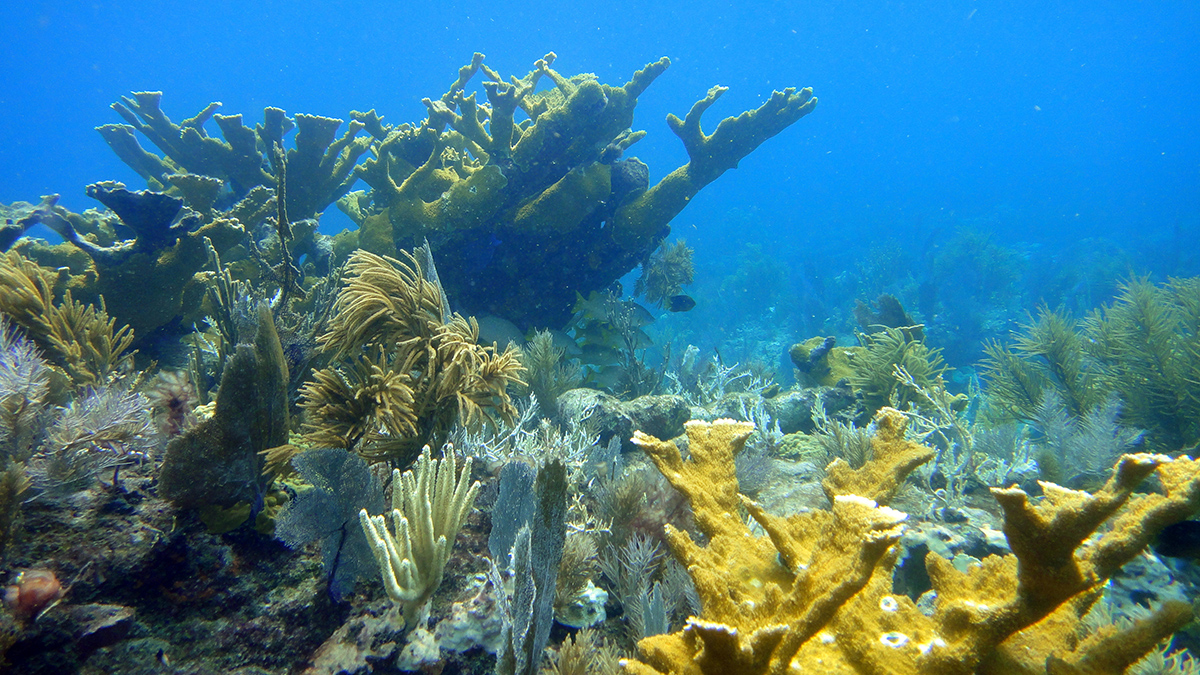A translation of this article was made possible by a partnership with Planeteando. Una traducción de este artículo fue posible gracias a una asociación con Planeteando.
Source: Global Biogeochemical Cycles
As carbon emissions increase, the ocean absorbs more carbon dioxide. This causes a chain of chemical reactions that results in the formation of carbonic acid and overall ocean acidification. The excess hydrogen ions associated with ocean acidification can threaten coral reefs in two ways: The ions can break up the calcium carbonate of which coral exoskeletons are made, and they can bond with carbonate ions, leaving less material for corals to build their exoskeletons in the first place.
At smaller scales in shallower areas, local variations in the chemistry of seawater may either exacerbate or mitigate the effects of ocean acidification on reefs. In particular, biological activity—such as photosynthesis by algae and seagrass, or respiration by animals and other organisms—may alter the carbonate chemistry and acidity of seawater.
Because carbonate chemistry can vary widely by location and season, it can be difficult to parse out just how it impacts an ecosystem. Now, research from Palacio-Castro et al. sheds new light on the intertwined effects of local carbonate chemistry and ocean acidification on coral reefs off the coast of Florida.
The researchers analyzed the carbonate chemistry of seawater collected at 38 different locations within the Florida Coral Reef system multiple times per year from 2010 to 2021.
They found that seawater acidity increased in most of the reefs between 2015 and 2021, specifically in reefs located somewhat deeper and farther from shore. In shallower inshore reefs, however, carbonate chemistry dynamics often counteracted acidification.
Inshore reefs had the most seasonal variation in carbonate chemistry, with periods of both exacerbated and mitigated acidification. Inshore reefs often coexist with seagrass beds, and the new findings align with prior research suggesting that the effects of seagrass on carbonate chemistry could help protect reefs from acidification.
The analysis also revealed spatial variations, with reefs in the Upper and Middle Florida Keys having less acidic seawater than the Lower Keys. This suggests that the Upper and Middle Keys may have better conditions for sustaining reefs.
Together, these findings deepen scientists’ understanding of ocean acidification within the Florida Coral Reef system and could help inform further research and efforts to mitigate the effects of ocean acidification both there and in similar ecosystems. (Global Biogeochemical Cycles, https://doi.org/10.1029/2023GB007789, 2023)
—Sarah Stanley, Science Writer

